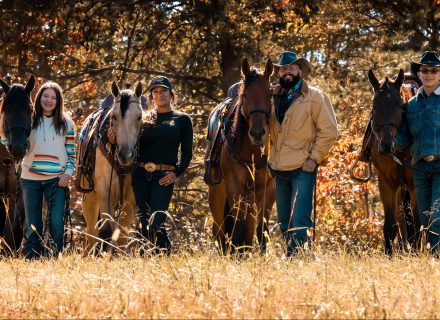Andy Sanchez continues a father-son tradition of carpentry at his studio in New Mexico.
Carpentry began for Andy Sanchez at his dad’s workbench. He honed his skills working on a two-year job building the finish carpentry on a house for which the owner demanded perfection. “It was like being paid to go to school,” he recalls. “It didn’t matter how long a cabinet took to build, or how many times we did it over again. It just had to be as perfect as we could make it.” Today, Sanchez and his son Daniel build furniture to perfection in their New Mexico studio. Their furniture is instantly recognizable, from the U.S. to Europe, for how its live edges and polish allow the wood to speak.
What Inspires
“I was building Spanish Colonial furniture, which is what my dad built, when a man brought me two incredible slabs of alligator juniper wood. The tree only grows in New Mexico and Arizona. At the time, I was fascinated by craftsman George Nakashima’s live-edge furniture. With a live-edge style, the natural edge of a piece of wood forms the furniture versus cutting everything square. I took that alligator juniper wood and made a dining room table. It was gorgeous. I’ve allowed wood to speak for itself ever since.
“It’s just beautiful when you can just take the wood and accent its burls, checks, and cracks. I love studying wood and honoring it in furniture. My respect for wood and nature originates in my faith in the Creator.”
Artistic Process
“The alligator juniper is a protected tree. A couple harvests dead standing trees, with a logging permit, from national forest lands for me. My sons and I often help carry the larger trees out to the nearest road. The biggest tree that we ever harvested was about 8 feet across. I had to build a saw that would be able to slab a tree of that diameter. The wood is beautiful, and removing dead trees helps mitigate wildfire risk. Additionally, I work with a company that removes dead or dying trees that are potentially hazardous to people and buildings. If I were making a movie, I would say, ‘No live trees were hurt in the making of my furniture.’
“For a table, we take two 25-inch-wide slabs that were next to each other when cut from the tree and book-match them together. We fill the natural knotholes and voids with semiprecious stones, such as opals, turquoise, marble, and ammonites. Sometimes we use a live edge in the center and lay stones all through the middle.
“We oil finish, instead of using polyurethane or varnish. Because oil doesn’t fill in the scratches left by rough sandpaper, we sand down to a 400-to-600 fine grit. The wood must have the feel of a perfect polish before we oil. When wood absorbs oil, all of the burls and grain just pop out. I love it. It’s not work — it’s just plain fun. Wood that is a thousand years and older deserves to wear the jewelry of a good finish and precious stones.”
Furthering The Craft
“Seven years ago, an apprentice joined my family’s studio. Jason Romero is now an accomplished craftsman. I encourage my fellow artists to believe in themselves. [I advise them to] do what comes from within, more than following trends. We keep making what we love, and people love what we do. When a craftsman puts his heart and soul into something to the best of his ability and makes it with future generations in mind, a piece maintains style for decades.”
Gallery representation by Andy Sanchez Furniture in Algodones, New Mexico; Cowboys and Indians in Santa Fe; and Patrick Mavros in London.
For more on Sanchez, visit his website and follow him on Facebook, and Instagram.
Photography: (All images) courtesy Andy Sanchez
From our July 2021 issue



















